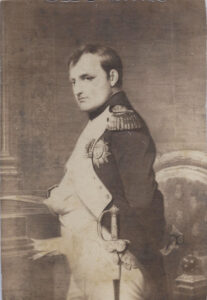April 30, 1861: Napoleon Sells The Louisiana Territory To America.
You are there: As of 1802 Napoleon Bonaparte is de facto emperor of France and signaling his intent to wrest global hegemony from Great Britain. In the west his vision includes recapture of Saint Dominique (Haiti) from Toussaint’s black rebels, and perhaps even extending its 1801 seizure of New Orleans further into and the Louisiana Territory, which Spain has ceded to the French at the Treaty of San Ildefonso.
But suddenly he changes his mind after an expeditionary force fails in Haiti and the Second Coalition comprising Britain, Russia and Turkey stiffen their resistance on the Continent. The west can always wait until he has completed his string of victories across Europe, the Middle East and Russia.
This strategic shift is welcome news for America which despite its Revolutionary War success in 1783 knows that it would be no match against France should it decide to invade. Thus George Washington’s policy of strict neutrality when it comes to the British and French hostilities.
But in parallel with laying low around all military and commercial conflicts, efforts to complete a peaceful purchase of the Louisiana lands begin in 1801 when Jefferson has Robert Livingston, his Minister to France, make an offer to purchase New Orleans. Talks stall into 1803 with French Foreign Minister deTalleyrand opposing a sale. Napoleon overrides this, and on April 11, 1803, Livingstone is told that the entire Louisiana Territory can be purchased for $15 million or roughly 3 cents per acre. The astonished American representatives, Livingstone and James Madison, jump at the offer and sign the order on April 30 in Paris.
Remarkably, Jefferson encounters resistance to the deal back home. Several of his party’s strict constructionist colleagues say that the Constitution forbids any such unilateral expenditure of government funds. His Federalist opponents express multiple concerns: e.g. Britain will see is as helping France; New England natives will lose domestic power to western immigrants; many new slave states may materialize over time. But Jefferson’s Democrat-Republicans enjoy a 21-9 seat margin in the Senate which ratifies the Treaty, and a 100-39 edge in the House which supports the funding. The action almost doubles the landmass of America and eventually adds 15 states to the Union.
Milestones In The Expansion Of America’s Landmass
| Year | Land Added | Acquired From | Method | Square Miles | % Total |
| 1784 | 13 colonies to Miss R | Britain | War | 888,811 | 29% |
| 1803 | Louisiana Territory | France | Purchase | 827,192 | 27 |



